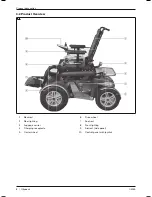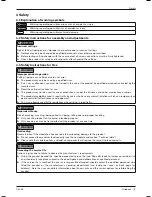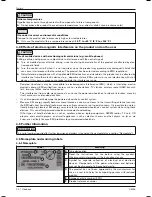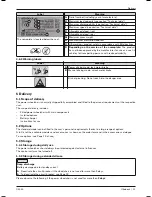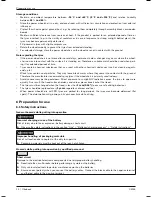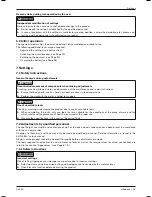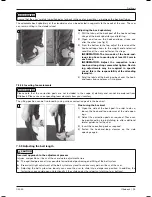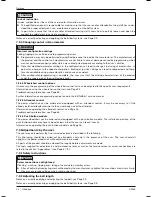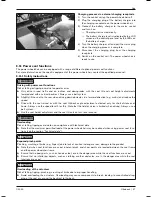
Getting in from the front
1) Fold the footrest up (see Page 20).
2) Have an attendant assist you or use a transfer lifter to get into and out of the power wheelchair.
3) Fold the footrest down again.
Getting in from the side
1) Bring the power wheelchair as close as possible to the seat surface upon which the user is seated.
2) Remove the side panel (see Page 19).
3) Fold the footrest up (see Page 20).
4) Slide into the seat from the side. Using a transfer board can make side transfers easier.
5) Fold the footrest down again.
6) Reinsert the side panel (see Page 19).
8.6 Lap belt
INFORMATION
Information on additional belt systems: see Page 55.
The lap belt is a safety belt that provides additional stabilisation and keeps the user from sliding out of the seat.
8.6.1 Adaptation
CAUTION
Improper adjustments
Injuries, malpositions, illness of the user due to adjustment changes
►
The belt system is an important part of an individual seating unit/seating solution. Do not modify the installa
tion position and basic settings established by the qualified personnel.
►
In case of problems with these adjustments (such as an unsatisfactory sitting position), promptly contact the
qualified personnel who fitted the product.
►
Immediately
consult the qualified personnel if you detect signs of discomfort or fear when using the product.
►
Have the basic settings of the belt system checked regularly. Adjustments may be required due to the growth
of the user or because of changes in the course of the disease.
Small length adjustments of the belt by the user or an attendant (e.g. for clothing of different thickness) are pos
sible.
The belt length can be adjusted on both sides. Excess belt length is taken up by the plastic slider.
60°
90°
15
Positioning the user in the seat
•
Place the user in an upright, 90° seated position (if
physiologically possible).
•
Ensure that the back is up against the backrest pad
ding (if physiologically possible).
•
The lap belt should be at an angle of about 60° to
90° to the seat surface and run in front of the pelvic
bone.
Possible positioning errors
•
The lap belt is positioned above the pelvis of the user in the area of the soft part of the stomach.
•
The user does not sit upright in the seat.
•
If the lap belt is too loose, the user can shift/slide out to the front.
•
During the installation/adjustment, the lap belt is routed over parts of the seating system (e.g. over armrests or
seat pads). This causes the lap belt to lose its retaining function.
22 | Ottobock
Use
C2000
Содержание C2000
Страница 1: ...C2000 Instructions for use 3 ...
Страница 69: ...Ottobock 69 C2000 ...
Страница 70: ...C2000 70 Ottobock ...

